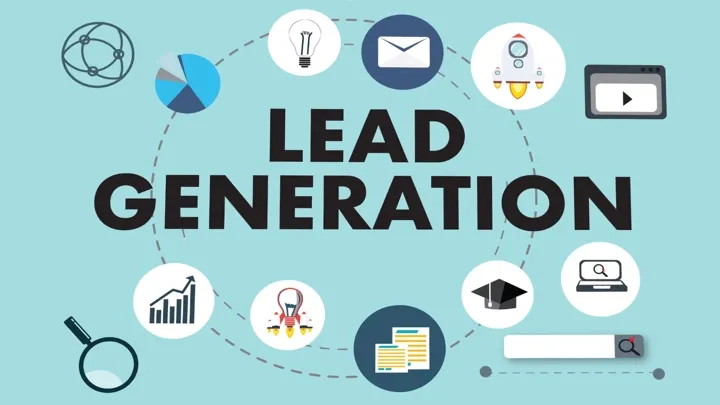In today’s digital ecosystem, standing out in the crowd has become one of the greatest challenges. Audiences are constantly bombarded with sales pitches, pop-ups, and promotional emails, most of which never capture genuine attention. While companies and individuals often invest significant resources into outreach, the results can be disappointing because most messages fail to establish authentic connections.
This is where a smart Lead Generation Tool can play a transformative role—not by automating bulk messages that get ignored, but by creating opportunities for meaningful conversations that matter. Lead generation today is less about chasing numbers and more about understanding people.
Why Traditional Outreach Fails
The old methods of outreach relied heavily on volume. The idea was simple: the more emails you send, the more responses you’ll receive. However, this approach no longer works in an environment where inboxes are cluttered and attention spans are shorter than ever.
Recipients have become highly selective about what they engage with. Generic subject lines, impersonal greetings, and irrelevant offers rarely get a second glance. In fact, in many cases, they damage credibility. A poorly crafted message signals that the sender does not understand or respect the recipient’s time.
A Shift Toward Humanized Communication
Today, the landscape has shifted from quantity to quality. What truly drives engagement is relevance. People are more likely to respond when they feel a message speaks directly to their needs, goals, or challenges. This is where personalization and context-based communication have become indispensable.
By focusing on the individual instead of the mass, lead generation strategies can evolve into relationship-building strategies. It is no longer about filling a database with thousands of names—it is about identifying the right people and reaching them with thoughtfulness.
Understanding the Role of Data in Modern Lead Generation
Behind effective personalization lies data. Not the cold, intrusive kind, but meaningful insights that help shape communication. Simple details such as a recipient’s industry, interests, or recent activity can provide valuable context when crafting messages.
Data-driven communication doesn’t have to be overly technical. Even a basic understanding of the recipient’s preferences can transform an otherwise generic message into one that feels relevant and thoughtful. This balance between information and empathy is the cornerstone of modern lead generation.
Timing: The Silent Driver of Engagement
Another overlooked aspect of lead generation is timing. Sending the right message at the right time can dramatically influence outcomes. For example, following up on a recent event, acknowledging a milestone, or simply reaching out when someone is actively exploring solutions can make communication feel timely rather than forced.
Timing not only improves open and response rates but also shows attentiveness. It demonstrates that outreach is not random, but intentional. This, in turn, builds trust, which is critical for lasting connections.
Building Emotional Resonance in Outreach
Beyond data and timing, there is an emotional layer that often determines whether a message resonates. People naturally connect with communication that feels human. A thoughtful tone, empathy, and recognition of shared challenges all contribute to creating this emotional bond.
Instead of seeing leads as entries in a database, the best approach is to view them as individuals with unique stories. A message that acknowledges their journey is far more powerful than one that focuses solely on selling. This emotional connection often becomes the deciding factor in whether a conversation moves forward.
Balancing Automation with Authenticity
Technology has made it possible to scale communication, but the risk lies in losing the human touch. While automation can streamline processes, it should never replace authenticity. The most effective systems today are those that balance efficiency with personalization.
The goal should be to use automation as a support, not a substitute. It should handle the repetitive tasks while allowing room for customization and creativity. This ensures that each recipient still feels like they are being addressed as an individual, not as one of thousands.
Moving Beyond Transactions Toward Relationships
One of the biggest mistakes in lead generation is treating it purely as a numbers game. This transactional approach may bring short-term results, but it rarely leads to sustainable growth. The real strength of lead generation lies in its ability to create relationships that endure beyond a single sale.
When outreach is thoughtful, consistent, and respectful, it establishes trust. Over time, this trust evolves into loyalty, referrals, and long-term collaboration. In this sense, lead generation becomes less about chasing leads and more about cultivating communities.
Personalization Beyond the Business World
Although lead generation is often framed in a business context, the principles extend far beyond. In education, community initiatives, and even personal projects, the ability to connect with people in meaningful ways remains equally important.
For instance, educators who personalize communication with students see greater engagement. Similarly, non-profits that tailor their outreach often foster stronger connections with supporters. This reinforces the idea that personalization is not just a tactic—it is a universal approach to building stronger human connections.
The Road Ahead for Lead Generation
Looking forward, lead generation will increasingly rely on empathy, context, and creativity. Tools and technology will continue to play an important role, but they will only be effective when guided by a human-centered mindset.
The future of successful communication will not be determined by how many people are reached, but by how deeply those people are understood. As digital spaces grow noisier, those who prioritize personalization and authenticity will always stand out.

